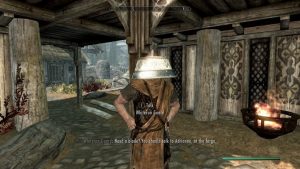- Behavioural Modelling is an important part of NPC development for games. Should emotive modelling be part of that development?
&
- Consider your favourite video game. If it contains AI controlled agents how individualistic are they and their behaviours, and, how might you set about improving them?
1
In my opinion Game AI agents today, don’t reflect the affective aspects of human behaviour, outside of pre-rendered cut scenes. The importance of which is quite high, as the gaming community is more and more recognising the importance of emotion in the development of engaging games. “Affect plays a key role in user experience” (Hudlicka, 2009).
The use of emotion effects on in-Game characters, are to immerse the player in a believable setting, ideally these expressions are appropriate for their context. It also is then necessary to develop, dynamically generated emotions, within the NPCs, in the context of ongoing gameplay, and the user-NPC interactions. Even though these have been developed and through research I have seen are based on the OCC model of emotions (Clore, 2013). However, through my own experience, I believe than any NPC interaction outside of cut scenes, never truly express this to a full extent yet, and I do understand it is still relatively new. For example, within open-world games like Bethesda’s “Fallout” series or “Elder Scrolls” series, you may have very emotive voice acting, however the emotion is never truly portrayed within the facial expressions or body movements. I feel to get a more immersive gameplay, this is a big portion of these open-world but story driven games that needs to be worked on, so people can truly connect with the characters they are surrounded by throughout the world.
2
One of my favourite games that does involve AI controlled Agents, is Bethesda’s “Elder Scrolls V: Skyrim”. Throughout the game everything other than items or environments, is controlled by AI. All of these NPCs are usually on set, rotational paths, when you are in rendering range. More often than not, I have witnessed a Whiterun Guard on its path, come across an object in its path and instead of walking around like a person would, instead retract their legs into their body and climb over the object. This is common for the NPCs of Skyrim, if they interact with something that isn’t normally in their path, they tend to continue “through” it. Ideally I would work on these kinds of things, so if the NPC is on its path and does interact with an anomaly as such, it would react in altering its path by walking around or to even further improve, move the object, and display some emotion towards the situation if the player is in sight or nearby to hear. The aspect of realistic reactions would be an improvement for me, for example, in the image below you can see the player is able to place a jug over the guard’s head, although this is funny, I would prefer that if the player were to do such a thing, the guard can stop you by using his/her hands like any normal person would.
References
Bomb, G. (n.d.). Retrieved from https://www.giantbomb.com/io-interactive/3010-3562/
Carroll, J. M. (n.d.). The Encyclopedia of Human-Computer Interaction, 2nd Ed. Retrieved from Interaction Design Foundation: https://www.interaction-design.org/literature/book/the-encyclopedia-of-human-computer-interaction-2nd-ed/human-computer-interaction-brief-intro
CBSNews. (2013, February 9). Preview: The Last of US. Retrieved from CBS News: https://www.cbsnews.com/news/preview-the-last-of-us/
CItyofRapture246. (2015). All Console Commands (Fallout 4). Retrieved from http://steamcommunity.com/sharedfiles/filedetails/?id=564770571
Clore, G. L. (2013). Psychological Construction in the OCC Model of Emotion.
D, B. (2017, June 20). Hitman Episode 1: ICA FAcility Free Download Available on PS4, PC, Xbox One. Retrieved from One Angry Gamer: https://www.oneangrygamer.net/2017/06/hitman-episode-1-ica-facility-free-download-available-on-ps4-pc-xbox-one/33425/
Ding, Y. Z. (2003). The Designing and Development of Game. People’s Traffic Press.
FrictionalGames. (2017). In the Games of Madness. Retrieved from http://frictionalgames.blogspot.co.uk/
Gohanssj2. (2013, Jun 27). Antics of the Whiterun Guards. Retrieved from Imgur: https://imgur.com/gallery/Ev9gF
Hudlicka, E. (2009). Foundations for Modelling Emotions in Game Characters: MOdelling EMotion Effects on Cognition.
Indie Game The Movie (2012). [Motion Picture]. Retrieved from https://vimeo.com/ondemand/indiegamethemovie/25268139
Lebowitz, J. (2011). Interactive Storytelling for Video Games.
McMullin, K. (2014, April 24). Passive vs. Active Participants. Retrieved from Collegewise: http://wiselikeus.com/collegewise/2014/04/passive-vs-active-participants.html
Norman, D. (1988). The Design of Everyday Things.
Playstation. (n.d.). The Last of Us Remastered. Retrieved from Playstation: https://www.playstation.com/en-gb/games/the-last-of-us-remastered-ps4/
Smithsonian. (n.d.). Apple 2 Personal Computer. Retrieved from National Museum of American History: http://americanhistory.si.edu/collections/search/object/nmah_334638


